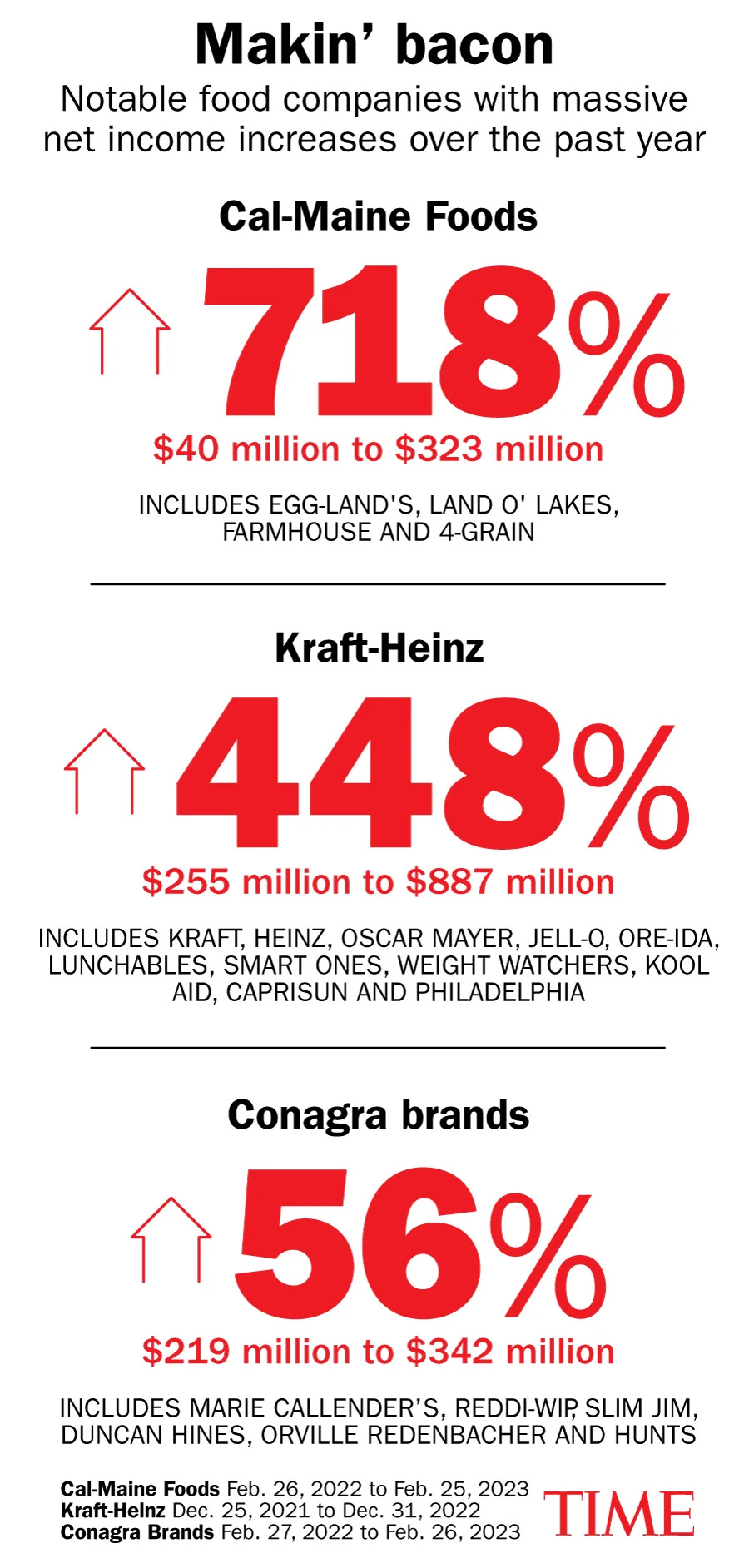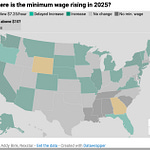Although this post goes out to both free and paid subscribers, if you are not already a paid subscriber, why not take the opportunity to upgrade to paid, right here and now. Thanks!
“Last year, U.S. consumers saw the largest annual increase in food prices since the 1980s. While food prices generally increased about 2% in prior years, they increased about 11% from 2021 to 2022. Inflation contributed to the increase. But there were other factors—like global disruptions to the food supply chain—that may have had a greater impact. And not everyone felt this increase the same way.” U.S.Government Accountability Office (GAO), April 11, 2023
You’ll notice the government takes what I’ll call the traditional approach to explain rising food prices, citing inflation in general, food supply chain interruptions and other pandemic-related influences that have increased prices for suppliers. Nerd Wallet also doles out a similar explanation, and adds increased labor and food production costs and the war in Ukraine to the mix of dark forces that have contributed to the surge in the price of our food.
It’s no small matter that some workers are finally beginning to earn a decent wage, and they’re immediately thrown into the mix of factors making everyone’s food prices soar. By extension, unions, which have fought for over two centuries to get workers a living wage, are the villains, too. Here is how much workers’ earnings increased in the last year, adjusted for inflation:
Real weekly earnings up 0.2 percent for year ending July 2023
August 15, 2023
Real average hourly earnings increased 1.1 percent from July 2022 to July 2023. Real earnings are earnings that have been adjusted for changes in consumer prices. The change in real average hourly earnings combined with a decrease of 0.9 percent in the average workweek resulted in a 0.2-percent increase in real average weekly earnings. The Economics Daily (TED) report from the U.S. Bureau of Labor Statistics.
While the traditional reasons given for soaring food costs are legitimate, and likely do increase costs for those selling ingredients we purchase and use to cook our own food and buy already prepared food, these explanations conspicuously omit the companies and their CEO’s who are actually making the decisions to raise food prices.
I’ve written about this issue in a previous post from February 2022, but at that time overall inflation was soaring. Today, inflation has dropped from a high of 9.1% in June 2022 (the highest in 40 years), to the July 2023 rate of 3.2 %, with food costs still increasing:
Food at home prices increased 3.6% over the past 12 months, while food away from home, like at restaurants, increased 7.1% over that period. NBC report, August 9, 2023
This chart from the U.S. Bureau of Labor Statistics shows the price fluctuations for major categories of goods for the last 12 months.
But don’t believe me, here’s what Time magazine had to say about the relationship between food company profits and your soaring grocery bills in an article published in April of this year, titled: “How Food Companies' Massive Profits Are Making Your Groceries More Expensive”
Conagra Brands—one of the largest consumer packaged goods companies in the U.S.—announced that it had posted a nearly 60% year-over-year profit increase between December 2022 and February 2023. The Chicago-based company, which makes a long list of grocery staples including Chef Boyardee, Hunt’s, Slim Jim, Reddi-wip, and Marie Callender’s frozen meals, reported a net income of $342 million, up from $219 million in the same quarter a year prior.
As an aside, I have never purchased one of the “grocery staples” produced by Conagra Brands listed above—these ultra-processed products are not food. Michael Pollan likely would describe “Chef Boyardee, for example, and I’m paraphrasing, as an edible food substance that is more a product of industry than of nature. We do have a choice.
The Time article also quotes a Tweet from economist and former Labor Secretary,
:“Follow the money, and the story is clear,” Robert Reich, the former US. Labor Secretary, tweeted last week. “Food corporations are using inflation as cover to jack up prices.”
And speaking of dark forces, here is a short list of giant food company profits over the last year, courtesy of Time:
The shameless profiteering doesn’t end with what you purchase at the grocery store. Here are two examples of CEO’s of fast food restaurants touting their rising profits, while continuing to hide behind inflation as justification to raise their prices, as noted in a New York Times piece earlier this year:
McDonald’s announced this week [April 29, 2023] that it had “strategic menu price increases” in the recent quarter. Same-store sales were up 12.6 percent, and its profit rose 63 percent from a year earlier, to $1.8 billion… “I’m really proud of how our system has executed pricing in light of the double-digit inflation that we have been experiencing,” Christopher J. Kempczinski, chief executive of McDonald’s, said on a call with analysts.
Mr. Kempczinski did mention, however, that some customers had been cutting back by “not adding fries”, thus slightly reducing their profit margins.
Chipotle, (admittedly not junk food) chimed in with its spring earnings report, saying:
“I think we’ve now demonstrated we do have pricing power,” Brian Niccol, the chief executive of Chipotle, said on a call with analysts this week. “We have a really strong brand, and we don’t want to be in front of the inflationary environment, but we also don’t want to fall behind.”
According to the Times article, Chipotle has been raising prices for more than a year and its profits are 84% higher.
Rising prices at the grocery store and restaurants aren’t just affecting those living at or below the poverty line — today, middle class families are suffering food insecurity, too. According to a recent survey conducted by the non-profit, No Kid Hungry, “58% of middle-income families reported that they struggled to put food on the table in the past 12 months.” That is an astounding number, particularly contrasted with the soaring profits of the food industry during the same time period.
And food pantries across the country have experienced a surge in visits this year, as the extra pandemic food benefits ended amidst rising food prices and overall inflation. In fact, where I live in central Ohio, there is a robust food pantry operation called the Mid-Ohio Food Collective, and it has seen a surge in visits in the last year of over 40%. The collective depends on private donations combined with a state budget allocation, which the Ohio state senate is proposing to cut for this year’s budget. “The food collective is calling on Ohioans to ask senators to restore food bank funds and not remove the proposed $15 million a year in hunger relief from the proposed two-year [2024-2025] budget.”
————————————————————————————————————
Please share your thoughts on this unfortunate, confusing situation we find ourselves in—reductions in federal and state aid to keep people fed, while overall inflation and separately rising food costs fuel food company profits, and drive more and more people to food pantries. Please comment below.
If you are not already a subscriber, why not take this opportunity to join our community with a free or paid subscription? A new paid subscription or an upgrade from a free to paid subscription will allow me to expand this newsletter with additional, primary source information, like interviews and public information requests, and expanded podcast offerings to include real, live guests. Although I won’t be going on strike any time soon, the current TV writer’s strike demonstrates that writers deserve to be paid, and paid well for their work, just like any other profession. Thank you in advance for your financial support of my writing!
















Share this post